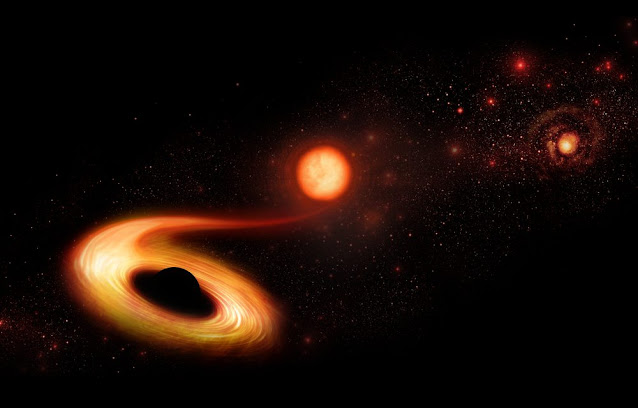A star races through space at a staggering speed of 18 million miles per hour, orbiting the colossal black hole at the center of the Milky Way
According to Space.com, a newly discovered star, now named S4716, has been found hurtling through space at an astonishing velocity of 5,000 miles (8,000 km) per second around the central black hole of our galaxy, the Milky Way. The expansive reaches of our universe continually unveil novel phenomena to astronomers. Just this week, astronomers detected two asteroids, similar in size to buses, approaching Earth at a proximity only a quarter of the distance between us and the Moon.
Aside from the study of asteroids, the search for potentially habitable exoplanets holds particular fascination for astronomers. However, nestled at the heart of the Milky Way lies an immensely massive black hole known as Sagittarius A* or Sgr A*. S4716 is presently locked in orbit around this formidable black hole, traversing at a remarkable pace.
What we know about S4716
Based on current observations, it has been established that S4716 is the swiftest star orbiting Sgr A*, zipping through space at a staggering rate of 5,000 miles (8,000 km) per second or 18 million miles (29 million km) per hour. Remarkably, it completes a full revolution around the black hole, which boasts a diameter of 14.6 million (23.5 million km) miles, in a mere four years.
S4716 belongs to a dense congregation of stars encircling Sgr A*, collectively referred to as the S cluster by astronomers. While all stars within this cluster exhibit high velocities, they differ in terms of their mass and luminosity. S2, another prominent star in this group, is larger in size compared to S4716 and enjoys greater recognition. However, S2’s orbit around the black hole requires a lengthy 16 years to complete, with its closest approach to Sgr A* occurring at a distance of 11 billion miles (18 billion km). In contrast, S4716 ventures as near as 9.2 billion miles (150 million km) to the black hole, approximately 100 times the distance between the Earth and the Sun.
The discovery of a star so close to a black hole could change our understanding of the evolution of our galaxy and its fast-moving stars. “The short-period, compact orbit of S4716 is quite puzzling,” said Michael Zajaček, an astrophysicist at Masaryk University in a statement. “Stars cannot form so easily near the black hole. S4716 had to move inwards, for example by approaching other stars and objects in the S cluster, which caused its orbit to shrink significantly.”
How did astronomers spot the fastest star?
Despite the valuable insights that S2 has provided concerning Sgr A*, it presents certain drawbacks. “S2 acts like a large person sitting right in front of you at a movie theater, obstructing your view of what truly matters. Consequently, the observation of the galactic center often suffers from S2’s interference,” explained Florian Peissker, an astrophysicist from the University of Cologne, involved in this research, in a statement.
Peissker and his team employed data from five telescopes, namely NIR2 and OSIRIS at the Keck Observatory in Hawaii, as well as SINFONI, NACO, and GRAVITY Very Large Telescopes. Over a span of more than two decades, they meticulously refined their analytical techniques to confirm the orbital period of S4716.
“For a star to be in a stable orbit so close and fast in the vicinity of a supermassive black hole was completely unexpected,” Peissker added.
The research was published in The Astrophysical Journal.
Do not forget to share your opinion with us to provide you with the best posts !





0 Comments